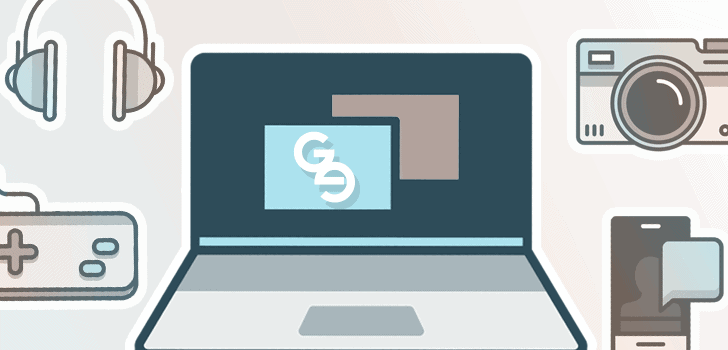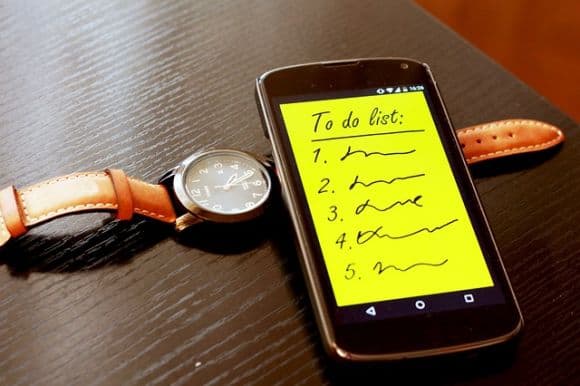Whether you’re running a business or just your own career, you can’t underestimate the value of your own time. When it comes to your peak performance, we’re not just talking about how effective you can get, but how efficient, too. For too long, have too many of us been content to wonder where the time went while we got very little done. Leave that question in the dust. Use the following tech tips to make sure that your time is going exactly where it’s supposed to.
Set goals early
A simple to-do list program isn’t going to solve all your problems immediately. In fact, if you’re not careful about using it properly, it can in fact become as much as a culprit in making you more inefficient. Instead of using that software to track every single task you have on your plate, instead use it to set some goals from the start of the day. Think of the tasks you absolutely need to get done.
Then keep that app open every second of the day to see how far along you’re getting in the goals you’ve set yourself. Of course, while you’re focusing on that list, the world keeps moving around you, and new demands come in.
Prioritize the rest
In most cases, you will find that you’re able to continue on with those most important tasks you can get done in the day. But what do you do with the tasks that continue to pile up? Simply put, you should create a system to manage and prioritize them. It needs to be a little more involved than a to-do list, so you should use some mind mapping software for this tip. You want to create four quadrants. Urgent and important, non-urgent and important, urgent and unimportant, and finally non-urgent and unimportant. These quadrants will do a lot to help you find the order to do those extra tasks in. When something new comes along, you can assign it a quadrant and forget it about it until you’re done with your current task.
Get some tech discipline
If we’re going to try and convince ourselves that we only lose track of time because we just have that much work to do, some of us are probably lying to ourselves. If you have a problem with keeping your focus on your work, admit it to yourself. The sooner you do, the easier it is to fix it. You need to develop discipline if you’re wasting time on the internet. For instance, it might only be a little bit at a time, but you might keep chopping up your workload to browse your emails. If that’s the case, then set a time of day that you’ll check them all in one batch instead. There are also time-tracking apps that can tell you exactly where you’re spending your time online. It can be a good idea to those most grievous of distractions during work hours.
Look at the tools that you’re using
Now we’ve set distractions aside, it’s time to get back to your work. But are you finding that some of those important tasks still feel like they’re taking just too long to do? There’s no doubt that sorting out the payment of bills and customer support are vital. But that doesn’t mean you have to spend all that time doing it. Especially if you have less boring work waiting. When it comes to busywork, you need to look at the possibilities of automating more steps in it.
Hand it to someone else
Even if you don’t have any employees, it’s entirely possible to free up a lot of your time by simply giving the tasks to someone else. For instance, you might have a load of urgent and important work that needs to be done, but you can’t just leave the accounting undone. When automating isn’t going to be enough, then look instead to virtual assistants.
As futuristic as they sound, it simply means using remote workers to temporarily help you take care of your workload. A virtual office can help business owners tackle all kinds of tasks from order tracking and getting in contact with customers. After all, you need to make sure that the customer is catered for no matter what you have to do at the moment.
Batch your tasks
You have your tasks prioritized and you have the right software that’s going to help you do it quicker. However, jumping from one tool to the next can still add up a lot of time throughout the week. Instead of tool-hopping, then consider reordering the tasks. For instance, if you have two objectives that both need you to use Excel, then do them one after another. This is known as batching your workload and has a significant effect of keeping your head in the game. As well as the practical amount of time it takes to do your work, you have to think of the time mentally spent getting acclimated to the tools you’re using, too. If you get ‘into the flow’ of using a word processor, suddenly switching to graphic design is going to take you out of the game for a while.
Keep yourself supplied
What about the amount of time you have to spend traveling away from work? Sometimes, it’s necessary. But there are other times you could just as easily do what you want without the trip. For instance, how much time do you spend getting checks from the bank or in the post office, waiting to simply get some stamps? Instead, consider just printing them out for a lower cost. It can even make it a lot quicker to print out what you need if you pair it with software you’re already using. For instance, Intuit checks make it easier to print out directly from your accounting software.
Never be late
How you manage your time doesn’t just affect how much work you get done. It also has a big effect on how others see you. From business owners to clients and even your own colleagues. If you’re late once too often, it’s going to work against your attempts to build a professional image. We know that you don’t always have all your devices on you at any moment. Instead of creating a schedule on one of them, work on a schedule that can get shared between them all. That way you can get that alarm when you might otherwise miss it because you don’t have your phone on you, or you’re away from your PC.
Or just don’t make the trip
Sometimes, it’s nice to take a trip as an excuse to get out of the office. If you want to avoid some serious crunch time, however, the minutes and hours spent in transit feel like a complete and utter waste. So, cut them out of the meeting. See if you can’t get the other side of the meeting to agree with teleconferencing instead. You still get face-to-face, but much more conveniently. Just make sure you test all aspects of the process beforehand. Make sure the connection stays strong for at least ten minutes and test both the audio and visual fidelity. You don’t want to make plans only to find you’re basically unable to communicate when the time comes.
Track your time and use the tools above to use less of it to get the same work done, or get even better work done. One of the reasons we rely on computers and other technology in business is for its time-saving potential. Remember that.


